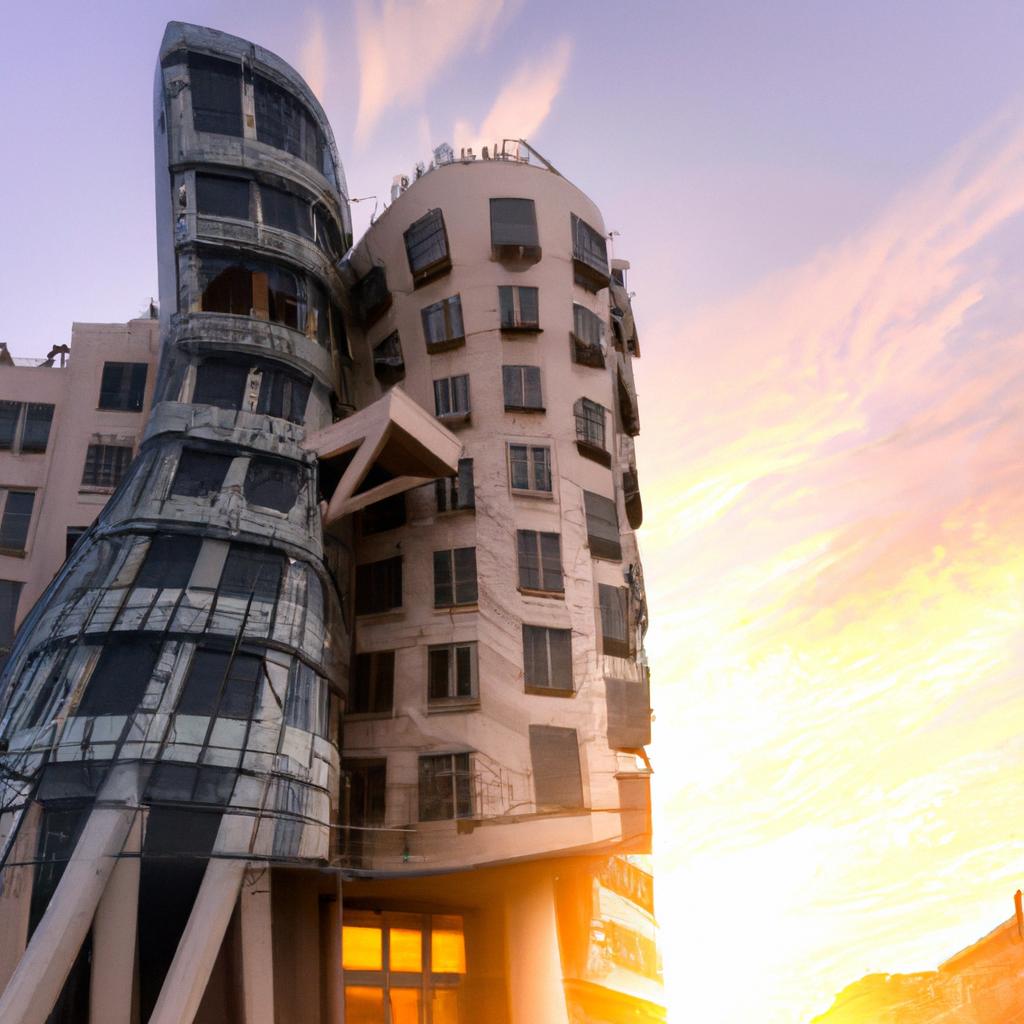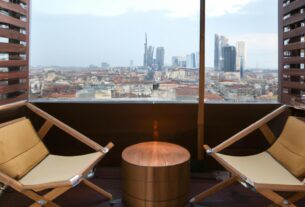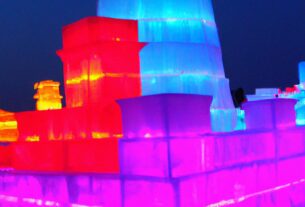The city of Prague is renowned for its breathtaking architecture, and one building stands out among the rest: the Dancing Building, also known as the Fred and Ginger Building. This architectural masterpiece is a true icon in Prague, captivating onlookers with its captivating design that appears to be in motion. In this article, we’ll delve into the rich history, innovative design, and cultural significance that make the Dancing Building truly enchanting.
A Dance in Stone and Glass
Designed by the world-renowned architect Frank Gehry, the Dancing Building was completed in 1996. Its distinct style stands in stark contrast to Prague’s Baroque and Gothic architecture, making it a one-of-a-kind addition to the city’s skyline. Inspired by the acclaimed dancing duo Fred Astaire and Ginger Rogers, Gehry’s design is a tribute to their graceful movements and harmony. The building’s name itself pays homage to their extraordinary talent.
A Symphony of Design
The Dancing Building is a true masterpiece of modern architecture. Its undulating curves and irregular shapes give the illusion of fluidity and motion. The façade, composed of curved glass panels, reflects the surrounding environment, creating a dazzling visual effect. This unparalleled design has earned the Dancing Building numerous awards and widespread acclaim as an architectural gem.
The Heart of Hope and Renewal
Situated on the banks of the Vltava River, the Dancing Building holds a significant place in Prague’s history. It was erected on the site of a structure that was destroyed during World War II. The building symbolizes hope and renewal, breathing life into a once-devastated area. Moreover, its strategic location offers breathtaking views of the city and the river, making it a beloved destination for tourists and locals alike.
An Engineering Marvel
The construction of the Dancing Building was a monumental task, filled with numerous challenges. Its unconventional design presented technical difficulties that demanded innovative construction techniques. The building’s construction began in 1992 and lasted four years.
The building boasts a steel skeleton with concrete slabs forming the floors. Its distinctive façade features glass and white plaster, resulting in a shimmering and ethereal appearance. With nine floors, the Dancing Building houses offices, a restaurant, and a gallery on its top floor.
Overcoming Challenges with Ingenuity
The construction of the Dancing Building posed significant challenges, primarily due to its unique location. Previously occupied by a building destroyed during World War II, the site’s proximity to the Vltava River complicated the excavation phase of the construction process.
In addition, the building’s innovative design required pioneering construction techniques that had never been utilized before. Meticulous planning and impeccable engineering were necessary to ensure the curved steel frame’s strength and stability, capable of supporting the building’s weight.
Breakthrough Techniques That Shaped the Building
The Dancing Building’s construction pushed the boundaries of architectural innovation. One of the key techniques employed was computer-aided design (CAD), which facilitated the creation of a 3D model of the building. This model guided the construction process, enabling precise execution of the unique design.
Another groundbreaking technique utilized was the implementation of precast concrete elements. These elements were manufactured off-site and skillfully assembled at the construction site, ensuring the building’s fluid curves and perfect alignment. This meticulous approach showcased the project’s precision and allowed the realization of the Dancing Building’s distinctive shape.
Overall, the construction of the Dancing Building stands as a remarkable feat, a testament to the determination and vision of its designers and builders. Despite the challenges faced, the result is a breathtaking architectural wonder that continues to captivate and inspire all who encounter it.
Embracing Innovation and Beauty
The Dancing Building’s unparalleled design not only mesmerizes the eyes but also incorporates advanced technology and construction techniques. Let’s explore the structural innovations that make the Dancing Building a true architectural marvel.
An Intersection of Technology and Architecture
During the construction process, advanced computer modeling and simulation techniques were employed to ensure the building’s stability and safety. The intricate design presented a significant challenge for the construction teams, but innovative methods like slipforming were utilized to overcome these obstacles.
A Fusion of Materials
The Dancing Building’s unconventional design necessitated the use of unique and carefully selected materials, chosen for both their structural integrity and aesthetic appeal. The combination of glass and steel on the building’s façade creates a sleek and modern look, while custom-made materials were used to ensure a perfect fit for the curved elements.
Environmental Consciousness in Action
Not content with just being visually stunning, the Dancing Building also incorporates environmentally friendly features. Among these are a heat recovery system, which recycles waste heat from the building’s electrical equipment, and a rainwater harvesting system that collects and repurposes rainwater for the building’s toilets. This commitment to energy efficiency further enhances the building’s appeal.
The Dancing Building’s Impact: Beauty in Motion
The Dancing Building’s impact extends far beyond its physical presence. It has become an integral part of Prague’s community, tourism industry, and vibrant art and culture scene.
A Beloved Symbol
The Dancing Building has captured the hearts of both locals and visitors, serving as a proud symbol of Prague’s architectural prowess. Its unique design and beauty have put Prague on the global map as a destination for architecture and design enthusiasts.
A Tourist Magnet
As one of Prague’s most popular attractions, the Dancing Building draws visitors from around the world. Its captivating design and awe-inspiring appearance make it a must-see destination for anyone exploring the city. This popularity has significantly contributed to the growth of Prague’s tourism industry, benefiting the local economy and residents.
Inspiring Art and Culture
The Dancing Building’s unique design has left an indelible mark on Prague’s art and culture scene. Artists and designers worldwide have been inspired by its beauty, resulting in stunning photography, paintings, and other artistic expressions. Additionally, the Dancing Building has helped showcase the city’s cultural offerings, including its museums, galleries, and theaters.
In conclusion, the Dancing Building is not merely a structure; it is a masterpiece that seamlessly merges art and engineering. Its enchanting design, rich history, and cultural impact make it a must-visit destination for architecture enthusiasts and curious travelers alike.
At TooLacks, we are in awe of the Dancing Building’s ability to inspire and captivate. This architectural wonder serves as a powerful reminder that beauty and artistry hold a significant place in our increasingly technologically driven world.
If you plan on visiting Prague, make sure to include the Dancing Building in your itinerary. Experience the magic and allure of this extraordinary architectural gem for yourself. Prepare to be amazed!



